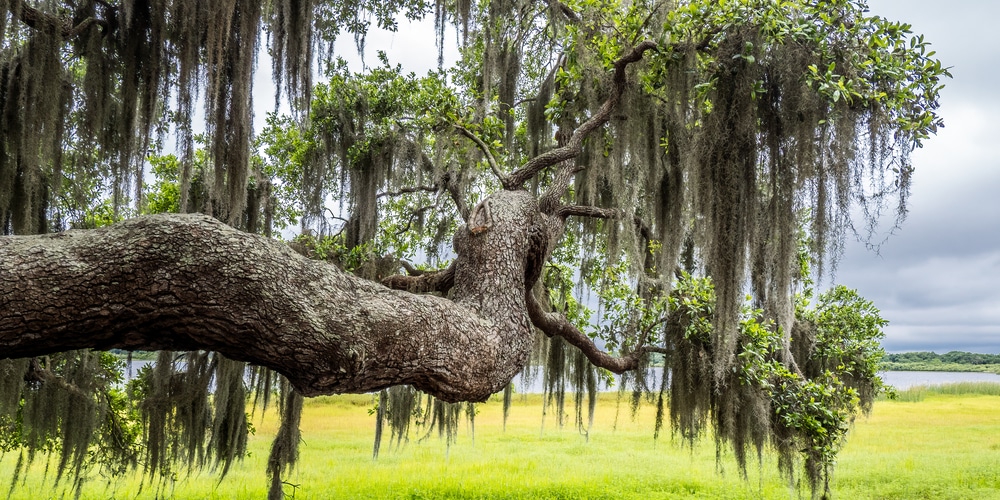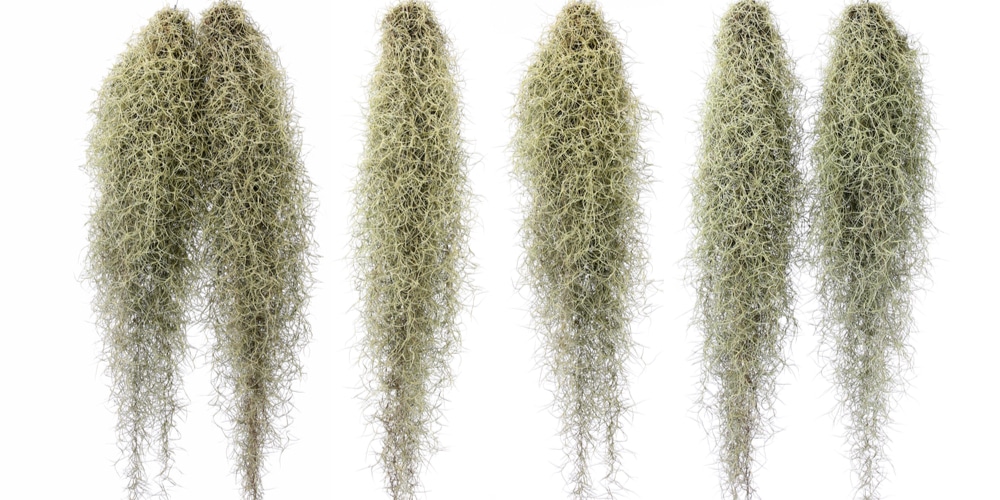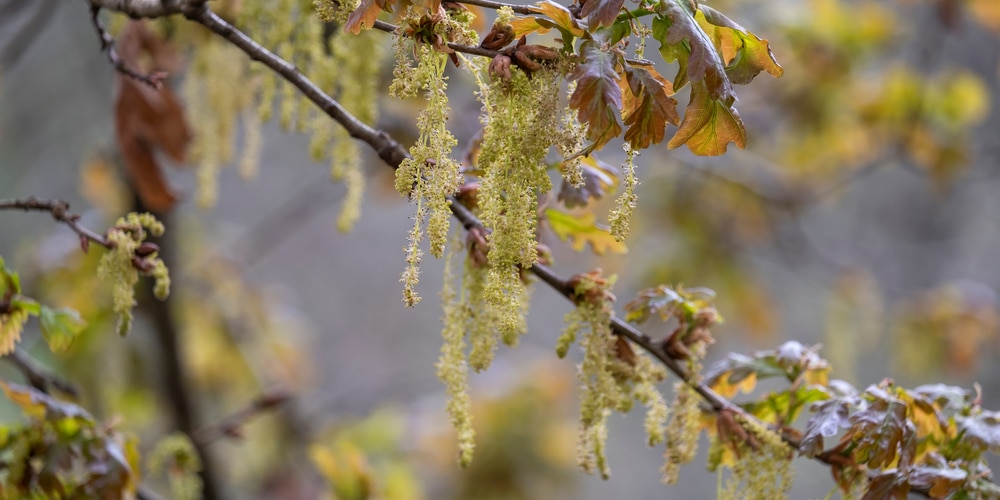If you live in a rural area or in a part of the world that has a lot of trees, you are probably familiar with the sight of the majestic oak. The oak tree is one of the world’s most common trees and can be found all over the United States.
At certain times of the year, you might notice some interesting changes to your local oak trees that leave you wondering, “what are the stringy things that fall from oak trees?” In this article, we’ll explore this question and try to find the answer.
What Falls Off Oak Trees in Spring?

So, what falls off oak trees in the spring? The answer to this question depends mainly on where you live.
If you live in the Southern United States, the stringy stuff you see hanging from your oak might be Spanish moss. However, if you live in the North or on the West Coast, it could be many different things, including lichen, mistletoe, or part of the oak tree called a catkin.
Spanish Moss
Spanish moss (Tillandsia usneoides) grows on trees and is a bromeliad. A bromeliad is a slow-growing and flowering plant native to the tropical and subtropical regions of Central and South America. You can often find Spanish moss on Southern live oak and bald cypress trees. You will most likely find them in the swamps and marshes of the southern United States.
Spanish moss is not parasitic and does not harm the tree upon which it grows. Its presence rarely kills the tree it lives on, although sometimes it can get so thick that it shades the host tree’s leaves and prevents the tree from adequately performing photosynthesis.
Lichen
Lichen is similar to Spanish moss in that it is not parasitic but epiphytic. It is not technically a plant. It lives off sunlight and moisture in the air and does not require soil to grow. Lace lichen is the most commonly seen form of lichen on oaks, and it resembles Spanish Moss in appearance.
Lace lichen is prevalent in California. It is so common in that state that the state lichen committee has deemed it the official California lichen. If the stringy stuff on your oaks is fragile and turns grey in winter, it is probably Lace lichen.
Catkins
Catkins are part of an oak tree’s reproductive cycle. A catkin is a male flower that releases pollen into the air. The pollen is carried by the wind or by insects to the female flower. Catkins are typically seen on live oaks during the flowering season in the spring.
Catkins are brown and fuzzy in appearance, as opposed to the stringy, bearded appearance of Spanish moss or lichen. A single catkin can let loose several pounds of pollen in the spring. Once a catkin has been depleted, it will fall off the tree onto the ground.
Mistletoe
Despite its reputation as a symbol of love and Christmas cheer, mistletoe is a bane on oak trees. It is a parasitic plant that roots into the tree’s bark and upper branches.
Male mistletoe plants produce the well-known white flowers, which spread pollen to female plants on lower branches. Mistletoe can grow up to two feet tall and completely overwhelm the host tree.



